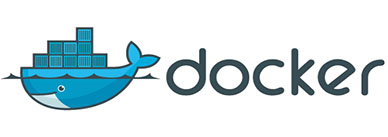How To Install Docker on Fedora 41

Docker has revolutionized the way developers build, ship, and run applications. By leveraging containerization technology, Docker allows you to package applications and their dependencies into a standardized unit for software development. This guide will provide a comprehensive step-by-step process for installing Docker on Fedora 41, ensuring you can harness the power of containers in your development workflow.
Understanding Docker
What is Docker?
Docker is an open-source platform that automates the deployment of applications inside lightweight, portable containers. These containers can run on any machine that has Docker installed, making it easier to develop and deploy applications consistently across different environments. Unlike traditional virtual machines, containers share the host system’s kernel, which leads to faster startup times and reduced overhead.
Why Use Docker on Fedora?
Fedora is known for its cutting-edge features and robust performance. Installing Docker on Fedora 41 provides several advantages:
- Compatibility: Docker runs seamlessly on Fedora, ensuring optimal performance.
- Community Support: Fedora has a vibrant community that actively contributes to documentation and troubleshooting.
- Frequent Updates: As a rolling release distribution, Fedora offers the latest software versions, including Docker.
Prerequisites for Installation
System Requirements
Before installing Docker on Fedora 41, ensure your system meets the following requirements:
- A 64-bit version of Fedora 41.
- A minimum of 4 GB RAM (8 GB recommended).
- A processor that supports virtualization (Intel VT-x or AMD-V).
Updating Fedora
Keeping your system up-to-date is crucial for security and performance. Run the following command to update your Fedora installation:
sudo dnf updateInstalling Required Packages
Before adding the Docker repository, install necessary packages that facilitate the installation process:
sudo dnf install dnf-plugins-coreSetting Up the Docker Repository
Adding the Docker Repository
The next step is to add the official Docker repository to your system. This repository contains the latest versions of Docker packages:
sudo dnf config-manager --add-repo https://download.docker.com/linux/fedora/docker-ce.repoVerifying the Repository
You can verify if the repository has been added successfully by listing all enabled repositories:
dnf repolistYou should see `docker-ce` listed among the repositories.
Installing Docker
Installation Command
With the repository set up, you can now install Docker Engine. Execute the following command:
sudo dnf install docker-ce docker-ce-cli containerd.ioThis command installs the core components of Docker along with its command-line interface and container runtime.
Post-installation Steps
After installation, start and enable the Docker service so it runs automatically at boot:
sudo systemctl start docker
sudo systemctl enable dockerConfiguring Docker
Managing User Permissions
If you want to run Docker commands without using `sudo`, you need to add your user to the `docker` group. Execute these commands:
sudo groupadd docker
sudo gpasswd -a $USER docker
newgrp dockerThis allows your user account to execute Docker commands directly.
Verifying Installation
You can verify that Docker is installed correctly by running a simple test image:
docker run hello-worldThis command downloads a test image from Docker Hub and runs it in a container. If everything is set up correctly, you’ll see a success message.
Troubleshooting Common Issues
Common Installation Errors
If you encounter issues during installation, here are some common problems and their solutions:
- Error: Unable to locate package docker-ce: This may occur if the repository was not added correctly. Double-check your repository settings.
- Error: Permission denied when starting Docker: Ensure you have added your user to the `docker` group and restarted your session.
- Error: Failed to start docker.service: Check logs for more details using
journalctl -u docker.service.
Checking Service Status
If you suspect that there are issues with the Docker service, check its status with this command:
sudo systemctl status dockerThis will provide information about whether the service is active or if there are any errors preventing it from running.
Using Docker on Fedora
Basic Commands Overview
Diving into using Docker requires familiarity with some basic commands. Here are a few essential commands to get started:
- Create a Container:
docker run -it ubuntu bash - List Running Containers:
docker ps - Purge Unused Images:
docker image prune -a
Docker Compose Installation (if applicable)
If you plan on using multiple containers for an application, installing `docker-compose-plugin` can be beneficial. To install it, run:
sudo dnf install docker-compose-pluginCongratulations! You have successfully installed Docker. Thanks for using this tutorial for installing the Docker on your Fedora 41 system. For additional or useful information, we recommend you check the official Docker website.